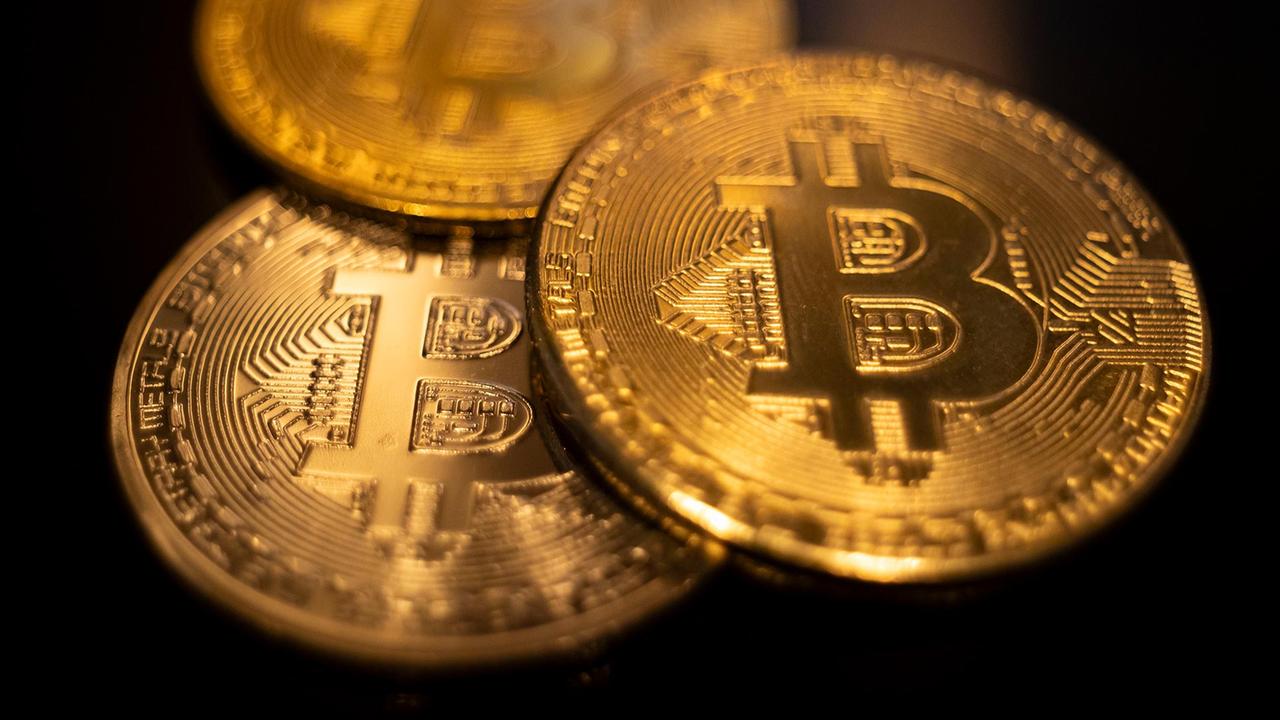faq
The next so-called halving for Bitcoin could occur this weekend – an artificial shortage. There is debate about whether it actually influences cryptocurrency prices. What exactly is it about?
Investors who bet on Bitcoin are currently looking forward to another so-called halving. For crypto fans, it makes the coveted commodity more scarce and thus increases its value. Critics, on the other hand, describe it as a simple technical change that is being hyped up by speculators in order to drive up the price.
What is halving anyway?
When programming the cryptocurrency, the inventor(s) with the pseudonym Satoshi Nakamoto limited the number of digital coins to a maximum of 21 million. The Bitcoins should not be distributed in one fell swoop – also to prevent inflation. There are currently around 19 million of them in circulation. The maximum amount is expected to be reached in 2140.
The Bitcoin holdings are gradually made available by solving complex calculation problems. The reward for manufacturing – also called “prospecting” or “mining” – is automatically halved at certain intervals. This is the halving.
How is Bitcoin made?
Bitcoin is mostly produced in huge “mining farms” in countries with low electricity prices. There, numerous computers calculate around the clock to solve the next calculation problem. Mining is a costly and energy-intensive undertaking that puts a strain on resources and the environment. Due to high electricity prices, private miners now have little chance against professional farm operators. The more of them start looking for new blocks, the higher the difficulty of the calculation task, the so-called hash rate.
The information from a transaction is encrypted and linked together in a database in the Bitcoin network. “Miners” worldwide confirm the correctness and store it in a block on the chain. For the provision of their computing capacity and the mutual controls, the “miners”, whose hardware has previously found the latest block, receive a certain number of newly created Bitcoins.
The so-called block subsidy is intended to encourage miners to secure the network. At the same time, new Bitcoins are issued. During halving, “miners” now only receive half of the digital coins for the same work. This makes “mining” financially less attractive and reduces Bitcoin production.
When will the halving happen?
Approximately every four years the reward for “mining” is halved. At the beginning of the Bitcoin era in 2009, it was still 50 Bitcoin per new block. With the first halving in 2012, this became 25 digital coins. The last time it took place was in May 2020 – for the third time in history. Until then the reward was 12.5 Bitcoin, since then it has been 6.25.
In general, there is no fixed date for the halving, but rather a certain number of Bitcoin mined. Every time 210,000 new blocks are found, the reward is halved. Experts are now predicting that it will happen again this weekend. Because according to Bitcoin's technical protocol, the fourth halving will be implemented tomorrow morning.
What does this all have to do with the Bitcoin price?
Some market participants see the halving as a shortage of supply, which will drive up the value if demand remains unchanged. “Cutting the miner reward to 3,125 Bitcoin will once again halve the amount of tokens introduced into the system,” explains Eric Demuth, co-founder and CEO of crypto trading platform Bitpanda. “Based on the principle of supply and demand, this could lead to an increase in the price of Bitcoin if demand continues to outpace the now diminishing supply expansion.”
Other experts, however, argue that the halvings are foreseeable and are therefore already included in the prices. Additionally, mining could become less profitable, which could also affect the price. “Investors should avoid seeing the halving as a guarantee that prices will continue to rise,” says Timo Emden from Emden Research.
The total supply of Bitcoin depends primarily on the holdings of the “miners”. However, there is hardly any data about it. The consequences of the halving for the “miners” are therefore unclear. “In fact, the halving could lead to less efficient or costly 'miners' leaving the market, especially those that rely on outdated or less efficient processes and hardware – or simply have too high energy costs,” says Demuth.
In his opinion, on the other hand, a sharp increase in prices could also follow, which in turn would lead to “mining” remaining profitable for most market participants. “However, this is all very speculative. What is certain is that the professional 'miners' have been able to and have been preparing for the halving for a long time and will still be able to work profitably afterwards.” Demuth believes that the “mining” landscape will change. “However, I don't think this will have a major impact on the network.”
How was the Course development at previous halvings?
Crypto entrepreneur Peter Grosskopf from the Berlin fintech Unstoppable Finance points out that in the past there has always been an increase before and after the halving. “We have already seen the increase before the halving in recent months. Markets are psychology. Therefore, it is possible that history repeats itself here. But I am not a fortune teller and usually hold back with forecasts and speculation.”
In fact, there is actually no evidence that it was really the halvings that drove up the Bitcoin price. During the last halving in 2020, the price rose by twelve percent in the week after, and a larger rally began a few months later. However, other reasons were predominantly given as reasons for this – from the loose monetary policy of the central banks to small investors who invested their money in Bitcoins instead of in leisure activities due to the pandemic-related restrictions.
During the 2016 halving, the cyber currency grew by just 1.3 percent the week after. Some time later, prices began to slide.
What happens next?
Because the crypto market is hardly regulated, it is difficult to understand who is buying and why compared to other asset classes. Since the beginning of the year alone, Bitcoin has temporarily gained around 50 percent, making memories of the dramatic price decline after November 2021 fade – even if Iran's attack on Israel and profit-taking cooled down the overheated Bitcoin business again in the past few days.
Stock marketers cite the US approval of Bitcoin ETFs and the prospect of falling interest rates as the most common reason for the rally in recent weeks, which has seen the price rise to over $60,000. However, in the highly speculative world of crypto trading, such explanations can quickly take on a life of their own and develop into self-fulfilling prophecies.
Despite the current record prices, many traditional investors are not feeling euphoric. They do not expect the Bitcoin price to move towards $100,000 or higher. According to a survey by Deutsche Bank, at least consumers in the USA are divided on the performance of Bitcoin: around a third expect the cryptocurrency to fall below $20,000 by the end of the year.
Only one in ten of the over 3,600 respondents sees Bitcoin exceeding $75,000 by the end of the year. 40 percent think Bitcoin will flourish in the coming years, while 38 percent expect it to disappear. Because of the great uncertainty, the German consumer advice centers do not see Bitcoin as a suitable investment for consumers. They point out the risks: “The massive price fluctuations up to and including total losses and the lack of security systems should be mentioned here.”
With information from Till Bücker, ARD financial editorial team.




